“In everyday walk with nature, one receives far more than enough he seeks.” – John Muir
📑 Table of Contents
1. Introduction
2. Why Gardening Reduces Stress
3. The Science Behind Gardening and Mental Health
4. Real-Life Examples of Gardening as Therapy
5. Key Benefits of Gardening for Stress Relief
– Boosts Mood and Positivity
– Reduces Anxiety and Depression
– Improves Sleep Quality
– Enhances Focus and Mindfulness
6. Practical Gardening Tips for Stress Relief
7. Gardening vs. Other Stress-Relief Activities
8. FAQs
9. Conclusion
Introduction
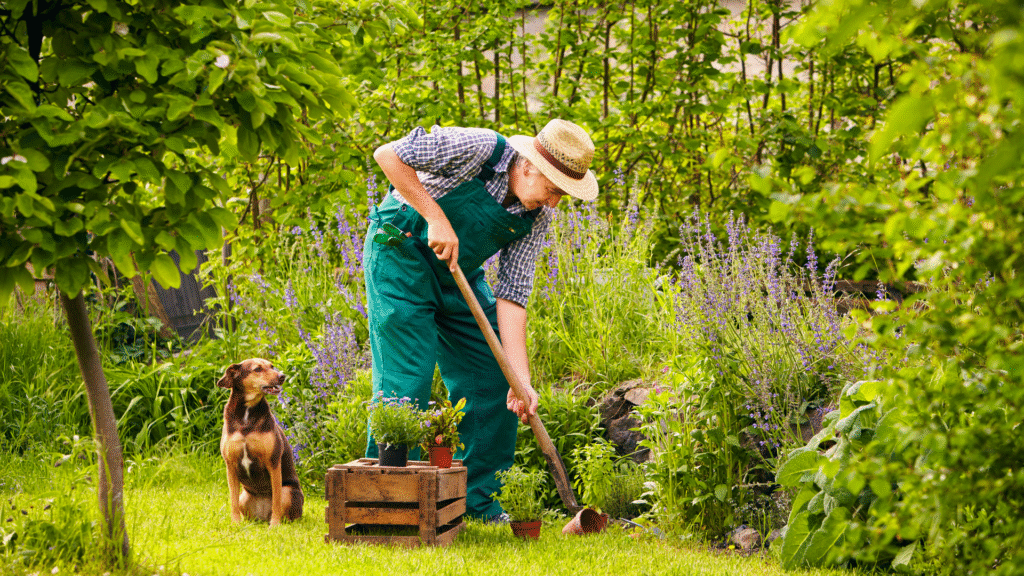
Modern life is fast, busy, and often overwhelming. Stress, anxiety, and burnout have become part of daily routines for many which is why we need to adapt some physical habits to relieve our minds as well as stress. But what if the simple act of planting seeds, watering flowers, or digging in the soil could bring peace to your mind?
Gardening for stress relief is not just a hobby to put some plants —it is a proven therapeutic activity that boosts mental health and clears our mind as well as the way we think. Spending time with nature reduces cortisol (the stress hormone), improves mood, and creates a sense of accomplishment because when we plant something, it feels like we have achieved a great thing in life.
Why Gardening Reduces Stress

Unlike scrolling on a phone or sitting in front of a screen, gardening connects you with nature, which is refreshing and calming. It requires slow, mindful actions—watering, pruning, or planting, which stimulate the satisfaction level—that naturally calm the nervous system. The fresh air, sunlight, and green environment signal your brain to relax and recharge, and it also removes the clouds from your mind while relieving the stress.
The Science Behind Gardening and Mental Health
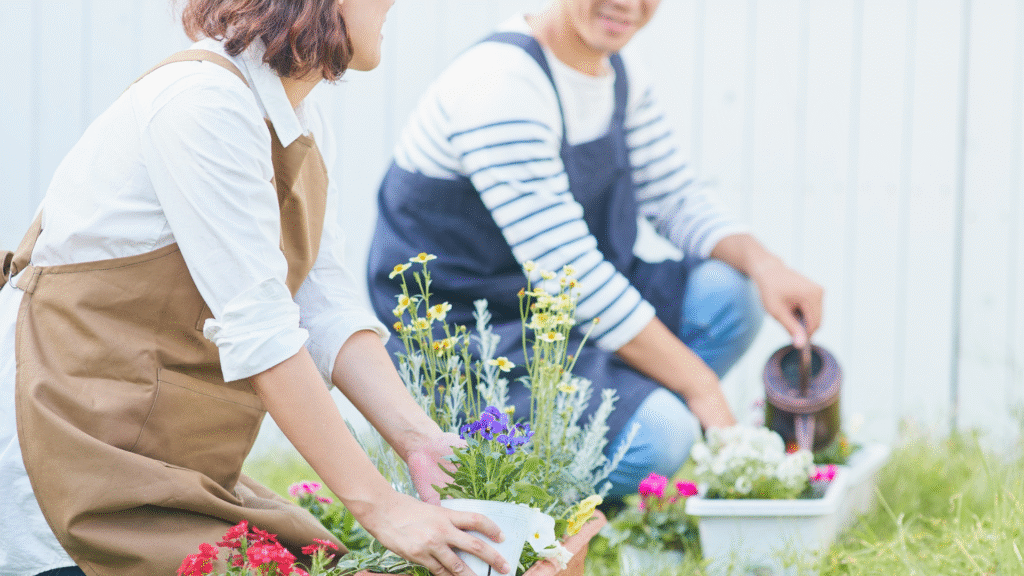
Research confirms the mental health benefits of gardening:
– A study published in the Journal of Health Psychology found that gardening lowered cortisol levels more effectively than reading indoors.
– According to the American Horticultural Therapy Association, horticultural therapy is used in hospitals and wellness centers to help patients recover mentally and emotionally.
– Exposure to soil even boosts serotonin, the “happy chemical,” improving mood naturally.
Real-Life Examples of Gardening as Therapy
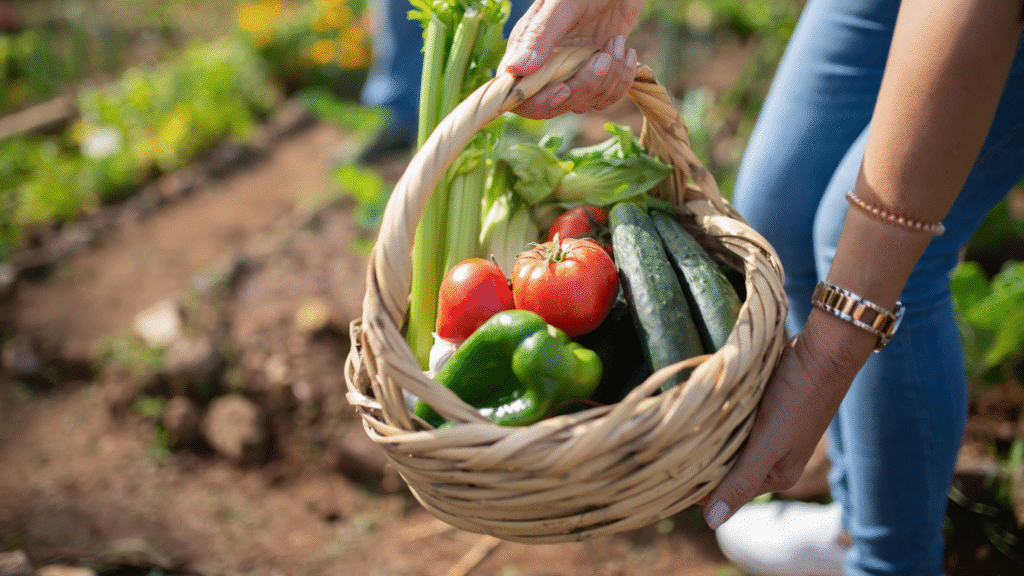
– Urban gardens: Many cities have community gardens where people escape the rush of city life and find peace in planting. Some people do planting in pots on the rooftop of their house.
– Hospital therapy gardens: Patients recovering from surgeries or mental health challenges often engage in gardening therapy to speed up recovery because the hospital is filled with a stressful environment, and they can recover by doing gardening.
– Personal stories: For example, Sarah, a corporate employee, shared how tending her balcony plants every morning reduced her work-related anxiety and improved her focus because nature is the best way to relieve stress.
Key Benefits of Gardening for Stress Relief
Boosts Mood and Positivity

Exposure to sunlight increases Vitamin D levels, which reduces depression and fatigue and boosts your mind.
Reduces Anxiety and Depression

Gardening is often described as a “moving meditation.” The repetitive tasks help clear negative thoughts and bring inner calm, which is why many people love this hobby.
Improves Sleep Quality
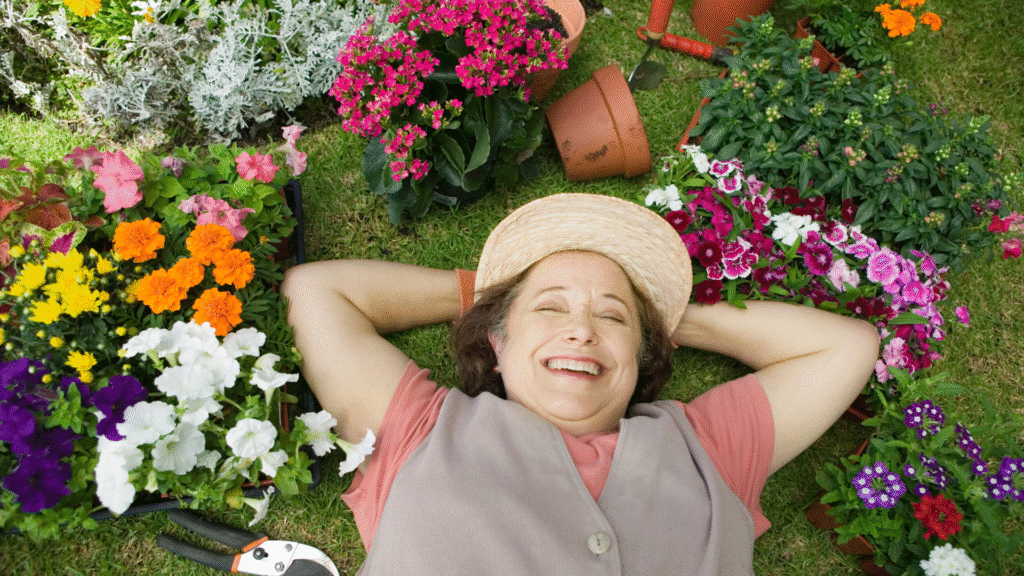
Spending time outdoors and engaging in physical activity helps regulate sleep patterns and make your body do a little bit of exercise instead of sitting around the whole day.
Enhances Focus and Mindfulness
Gardening helps you stay in the moment and feel calm as you float in the air—observing leaves, soil textures, and the growth process—distraction from stress triggers.
Practical Gardening Tips for Stress Relief

– Start small with indoor plants like aloe vera or peace lilies because they are effective in every way.
– Dedicate 10–15 minutes daily to watering, pruning, or observing plants. It helps in the growth of plants and our minds too.
– Create a mini balcony or kitchen garden with herbs like mint and basil, which are a basic need for the kitchen and diet as well.
– Use gardening as a digital detox—keep your phone away while gardening. Yup, it helps to reduce screen time.
– Join a community garden to meet like-minded people, which will help you to extend your way of caring professionally and effectively.https://heathyhabit.online/
The Emotional Connection with Nature

Gardening creates a bond between humans and the natural world. When you nurture a plant and see it grow, you experience a sense of care, patience, and responsibility, and it fills you with positivity. This emotional connection with living things reduces feelings of loneliness and creates a sense of belonging, like a place you feel you truly belong to. For people who feel isolated, especially in busy cities, a small garden can become a source of companionship and purpose.https://www.thrive.org.uk/get-gardening/stress-relieving-gardening
How Gardening Improves Physical Health Too
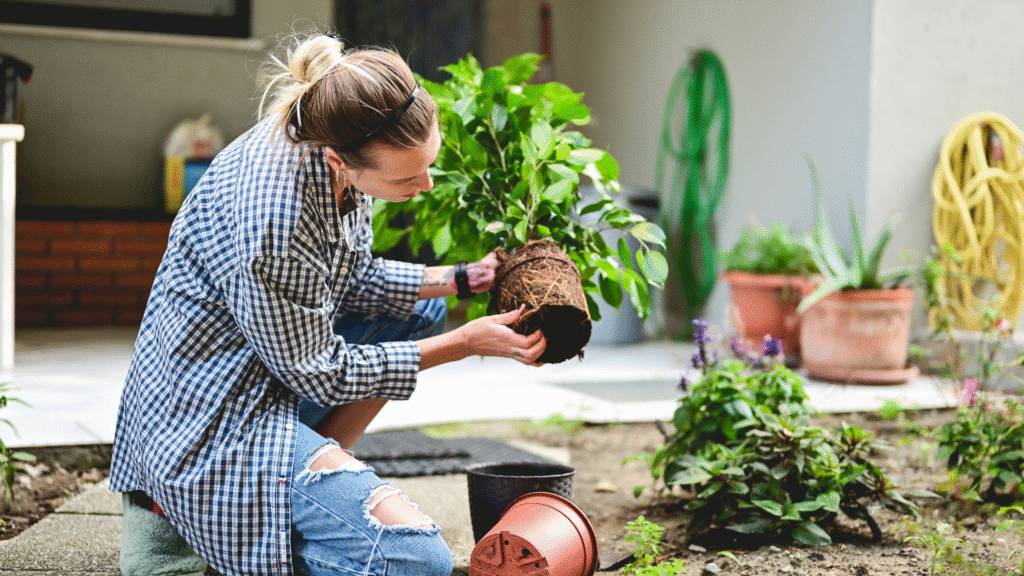
Stress is not only mental—it often affects the body through headaches, high blood pressure, and fatigue. Gardening provides light exercise; as a result, it reduces the stress weighing on the mind as well as makes you active throughout the process, such as bending, digging, or watering, which improves blood circulation and keeps the body active. This physical activity works hand in hand with mental relaxation, making gardening a holistic stress-relief tool.
Gardening and Mindfulness

Mindfulness is the practice of being fully present in the moment. Gardening naturally promotes mindfulness because it requires attention to detail, we have to stay focused to do planting—watering a plant gently, noticing new leaves, or feeling the soil’s texture. These details must be kept in check for proper plant growth. These small mindful acts reduce racing thoughts, calm the mind, and bring peace to daily life.
Cultural and Historical Perspective

Across cultures, gardening has always been linked with peace and spirituality. In Japan, Zen gardens are designed for meditation and inner calm. They are specially made for people to calm themselves and control their emotions while keeping themselves calm. In ancient Egypt, gardens were seen as sacred places for healing. Even today, many traditions consider working with the land a spiritual practice that connects people to something greater than themselves.
Long-Term Mental Health Benefits

Unlike short-term relaxation techniques, gardening provides ongoing benefits. Each season brings something new—planting in spring, caring in summer, harvesting in autumn, and preparing soil in winter. This continuous cycle offers structure, routine, and a long-term sense of purpose that helps reduce chronic stress and supports lasting mental well-being, and it gives us the ability to plant something new throughout the year, which is not boring but fascinating.
Tips to Start a Stress-Relief Garden

1. Begin with easy plants such as herbs (mint, basil, rosemary) or flowers (marigold, lavender).
2. Choose plants with pleasant fragrances because aromatherapy also reduces stress.
3. Design your garden as a calm corner—add a chair, small fountain, or wind chimes.
4. Don’t aim for perfection; enjoy the process rather than focusing only on results.
5. Keep a garden journal to record growth, weather changes, and your feelings—this enhances mindfulness.
Final Words of Inspiration
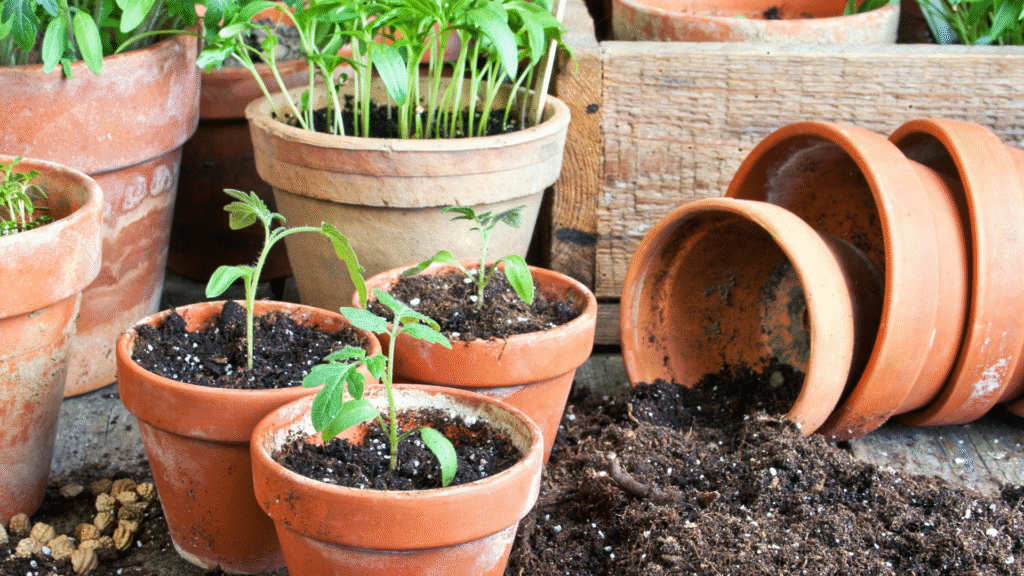
Gardening is a gentle reminder that life takes time, patience, and care. Many people avoid it because they have to deal with dirt, but with proper precautions, you can plant them, trust me it’s worth giving a try. As you watch plants grow slowly but steadily, you learn resilience and hope. Every seed you plant is not only a promise of greenery but also a promise of better mental health. So, take a step today—pick up a pot, plant a seed, and let nature guide you toward peace and balance.
Gardening vs. Other Stress-Relief Activities
While yoga, meditation, and exercise are excellent for stress management, gardening offers a unique combination of physical activity, mindfulness, and connection with nature. Unlike indoor activities, it provides fresh air, sunshine, and a creative outlet.
FAQs
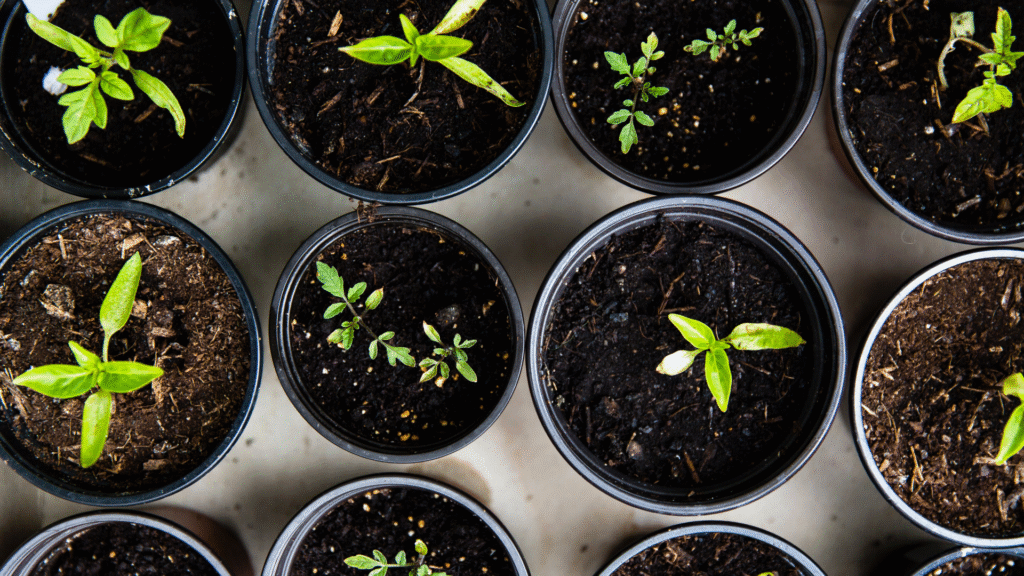
Q1: Can beginners benefit from gardening for stress relief?
Absolutely! Even a few potted plants can bring peace and joy. You don’t need a large garden.
Q2: How much time should I spend gardening to feel benefits?
Research suggests just 20–30 minutes a few times a week can significantly reduce stress.
Q3: What if I don’t have outdoor space?
Indoor gardening, balcony pots, or vertical gardens work just as well.
Q4: Can gardening replace professional mental health treatment?
Gardening is supportive, but not a replacement for medical advice. It works best alongside professional help if needed.
Conclusion
Gardening is more than planting flowers or vegetables—it’s planting seeds of peace, mindfulness, and healing within yourself.If stress is weighing you down, try stepping outside, touching the soil, and letting nature do its quiet magic. Remember, a single plant can transform not just your home, but also your mental well-being.
Start small, grow daily, and let your garden become your natural stress therapist
